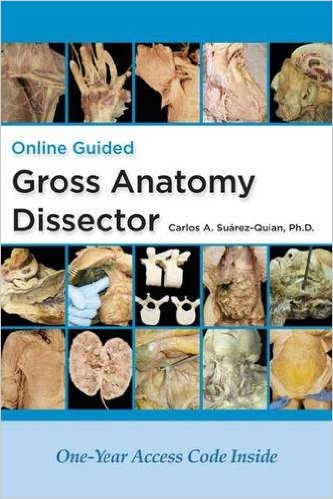Περιεχόμενα
The Netter Collection of Medical Illustrations: Musculoskeletal System, Volume 6, Part II – Spine and Lower Limb
SECTION 1—SPINE
1-1 Vertebral Column, 2
Cervical Spine
1-2 Atlas and Axis, 3
1-3 External Craniocervical Ligaments, 4
1-4 Internal Craniocervical Ligaments, 5
1-5 Suboccipital Triangle, 6
1-6 Dens Fracture, 7
1-7 Jefferson and Hangman’s Fractures, 8
1-8 Cervical Vertebrae, 9
1-9 Muscles of Back: Superficial Layers, 10
1-10 Muscles of Back: Intermediate and
Deep Layers, 11
1-11 Spinal Nerves and Sensory
Dermatomes, 12
1-12 Cervical Spondylosis, 13
1-13 Cervical Spondylosis and
Myelopathy, 14
1-14 Cervical Disc Herniation:
Clinical Manifestations, 15
1-15 Surgical Approaches for the Treatment
of Myelopathy and Radiculopathy, 16
1-16 Extravascular Compression of
Vertebral Arteries, 17
Thoracolumbar and Sacral Spine
1-17 Thoracic Vertebrae and Ligaments, 18
1-18 Lumbar Vertebrae and Intervertebral
Discs, 19
1-19 Sacral Spine and Pelvis, 20
1-20 Lumbosacral Ligaments, 21
1-21 Degenerative Disc Disease, 22
1-22 Lumbar Disc Herniation, 23
1-23 Lumbar Spinal Stenosis, 24
1-24 Lumbar Spinal Stenosis
(Continued), 25
1-25 Degenerative Lumbar
Spondylolisthesis, 26
1-26 Degenerative Spondylolisthesis:
Cascading Spine, 27
1-27 Adult Deformity, 28
1-28 Three-Column Concept of Spinal
Stability and Compression
Fractures, 29
1-29 Compression Fractures
(Continued), 30
1-30 Burst, Chance, and Unstable
Fractures, 31
Deformities of Spine
1-31 Congenital Anomalies of Occipitocervical
Junction, 32
1-32 Congenital Anomalies of Occipitocervical
Junction (Continued), 33
1-33 Synostosis of Cervical Spine (Klippel-Feil
Syndrome), 34
1-34 Clinical Appearance of
Congenital Muscular
Torticollis (Wryneck), 35
1-35 Nonmuscular Causes of
Torticollis, 36
1-36 Pathologic Anatomy of Scoliosis, 37
1-37 Typical Scoliosis Curve Patterns, 38
1-38 Congenital Scoliosis: Closed Vertebral
Types (MacEwen Classification), 39
1-39 Clinical Evaluation of Scoliosis, 40
1-40 Determination of Skeletal Maturation,
Measurement of Curvature, and
Measurement of Rotation, 41
1-41 Braces for Scoliosis, 42
1-42 Scheuermann Disease, 43
1-43 Congenital Kyphosis, 44
1-44 Spondylolysis and Spondylolisthesis, 45
1-45 Myelodysplasia, 46
1-46 Lumbosacral Agenesis, 47
SECTION 2—PELVIS, HIP, AND THIGH
Anatomy
2-1 Superficial Veins and Cutaneous
Nerves, 50
2-2 Lumbosacral Plexus, 52
2-3 Sacral and Coccygeal Plexuses, 53
2-4 Nerves of Buttock, 54
2-5 Femoral Nerve (L2, 3, 4) and Lateral
Femoral Cutaneous Nerve (L2, 3), 55
2-6 Obturator Nerve (L2, 3, 4), 56
2-7 Sciatic Nerve (L4, 5; S1, 2, 3) and
Posterior Femoral Cutaneous Nerve
(S1, 2, 3), 57
2-8 Muscles of Front of Hip and Thigh, 58
2-9 Muscles of Hip and Thigh (Anterior and
Lateral Views), 59
2-10 Muscles of Back of Hip and Thigh, 60
2-11 Bony Attachments of Muscles of Hip
and Thigh: Anterior View, 61
2-12 Bony Attachments of Muscles of Hip
and Thigh: Posterior View, 62
2-13 Cross-Sectional Anatomy of Hip:
Axial View, 63
2-14 Cross-Sectional Anatomy of Hip:
Coronal View, 64
2-15 Cross-Sectional Anatomy of Thigh, 65
2-16 Arteries and Nerves of Thigh:
Anterior Views, 66
2-17 Arteries and Nerves of Thigh:
Deep Dissection (Anterior View), 67
2-18 Arteries and Nerves of Thigh:
Deep Dissection (Posterior view), 68
2-19 Bones and Ligaments at Hip:
Osteology of the Femur, 69
2-20 Bones and Ligaments at Hip:
Hip Joint, 70
Physical Examination
2-21 Physical Examination, 71
Deformities of the Pelvis and Femur
2-22 Proximal Femoral Focal Deficiency:
Radiographic Classification, 72
2-23 Proximal Femoral Focal Deficiency:
Clinical Presentation, 73
2-24 Congenital Short Femur with
Coxa Vara, 74
2-25 Recognition of Developmental Dislocation
of the Hip, 75
2-26 Clinical Findings in Developmental
Dislocation of Hip, 76
2-27 Radiologic Diagnosis of Developmental
Dislocation of Hip, 77
2-28 Adaptive Changes in Dislocated Hip That
Interfere with Reduction, 78
2-29 Device for Treatment of Clinically
Reducible Dislocation of Hip, 79
2-30 Blood Supply to Femoral Head
in Infancy, 80
2-31 Legg-Calvé-Perthes Disease:
Pathogenesis, 81
2-32 Legg-Calvé-Perthes Disease:
Physical Examination, 82
2-33 Legg-Calvé-Perthes Disease:
Physical Examination (Continued), 83
2-34 Stages of Legg-Calvé-Perthes
Disease, 84
2-35 Legg-Calvé-Perthes Disease: Lateral Pillar
Classification, 85
2-36 Legg-Calvé-Perthes Disease: Conservative
Management, 86
2-37 Femoral Varus Derotational
Osteotomy, 87
2-38 Innominate Osteotomy, 88
2-39 Innominate Osteotomy (Continued), 89
2-40 Physical Examination and Classification
of Slipped Capital Femoral
Epiphysis, 90
2-41 Pin Fixation in Slipped Capital Femoral
Epiphysis, 91
Disorders of the Hip
2-42 Hip Joint Involvement in
Osteoarthritis, 92
2-43 Total Hip Replacement: Prostheses, 93
2-44 Total Hip Replacement: Steps 1 to 3, 94
2-45 Total Hip Replacement: Steps 4 to 8, 95
2-46 Total Hip Replacement: Steps 9 to 12, 96
2-47 Total Hip Replacement:
Steps 13 to 18, 97
2-48 Total Hip Replacement:
Steps 19 and 20, 98
2-49 Total Hip Replacement: Dysplastic
Acetabulum, 99
2-50 Total Hip Replacement:











